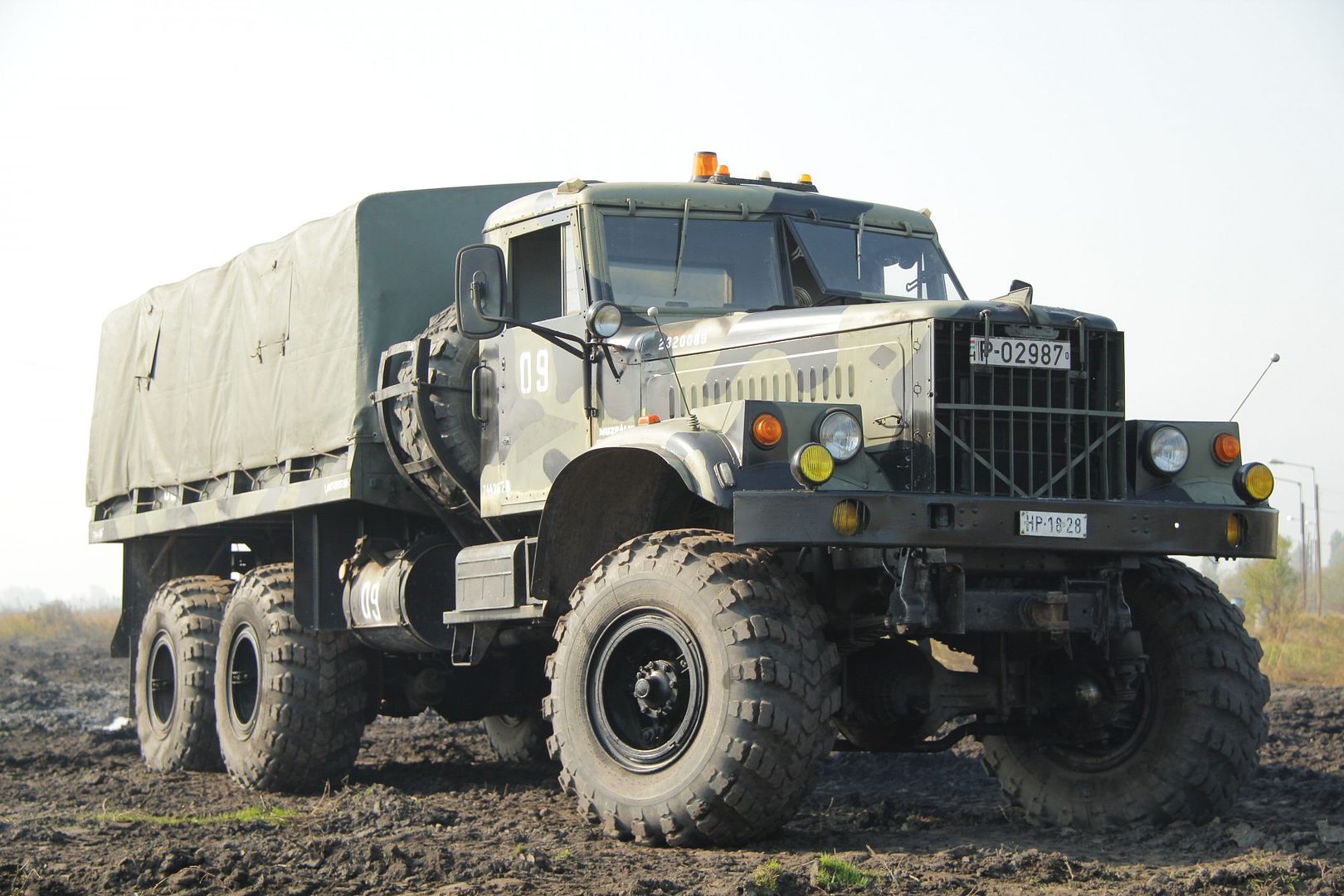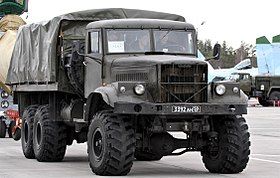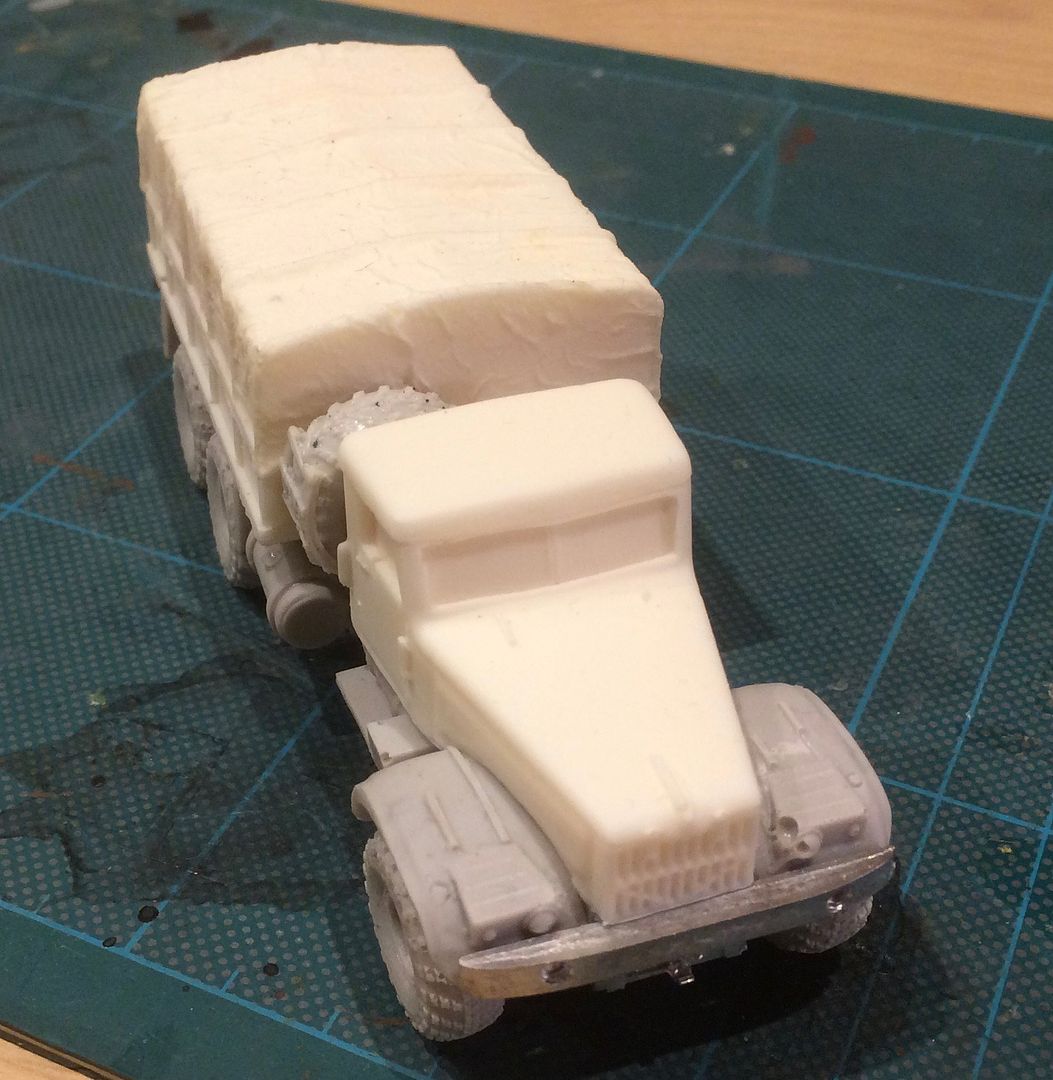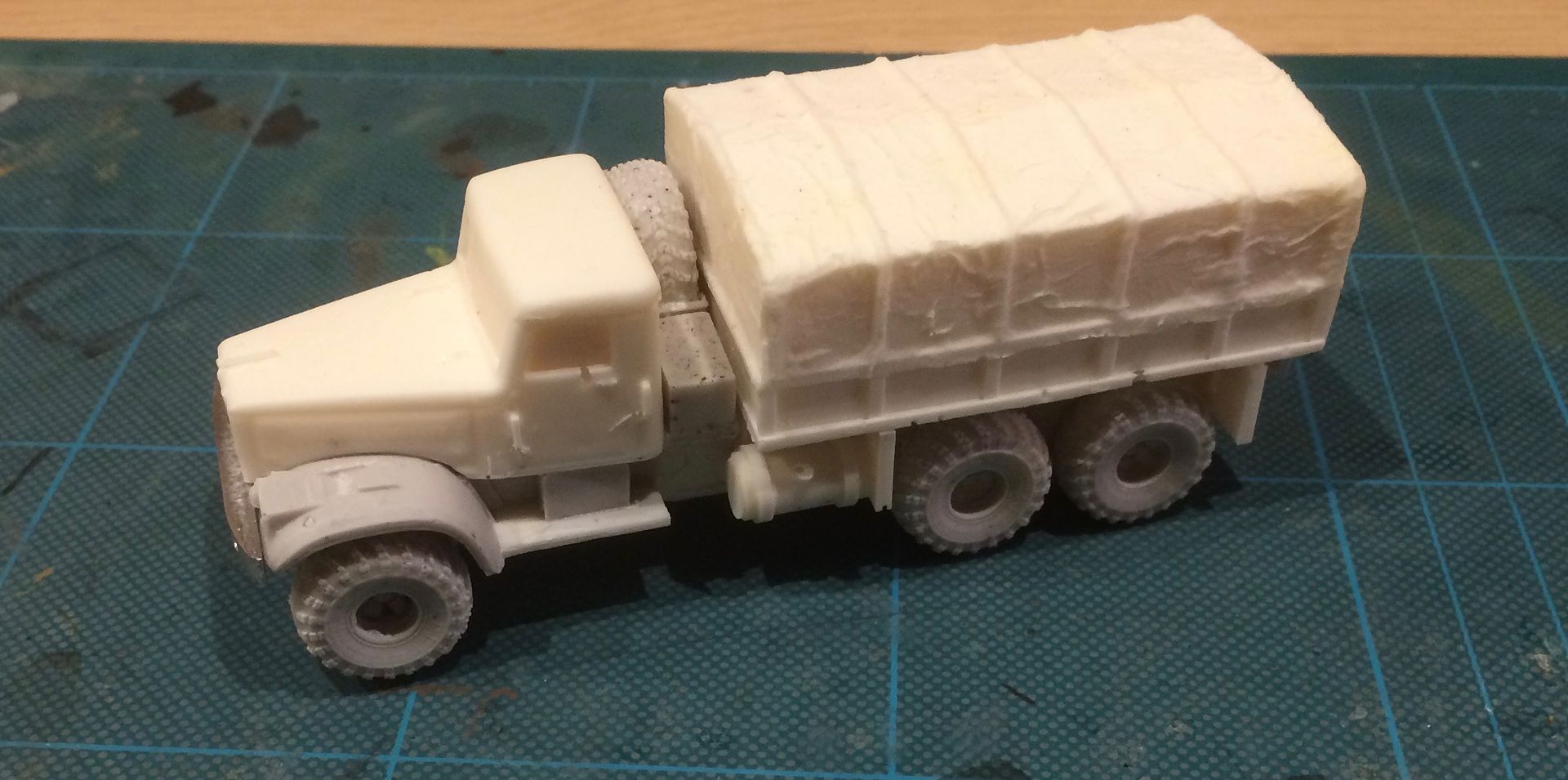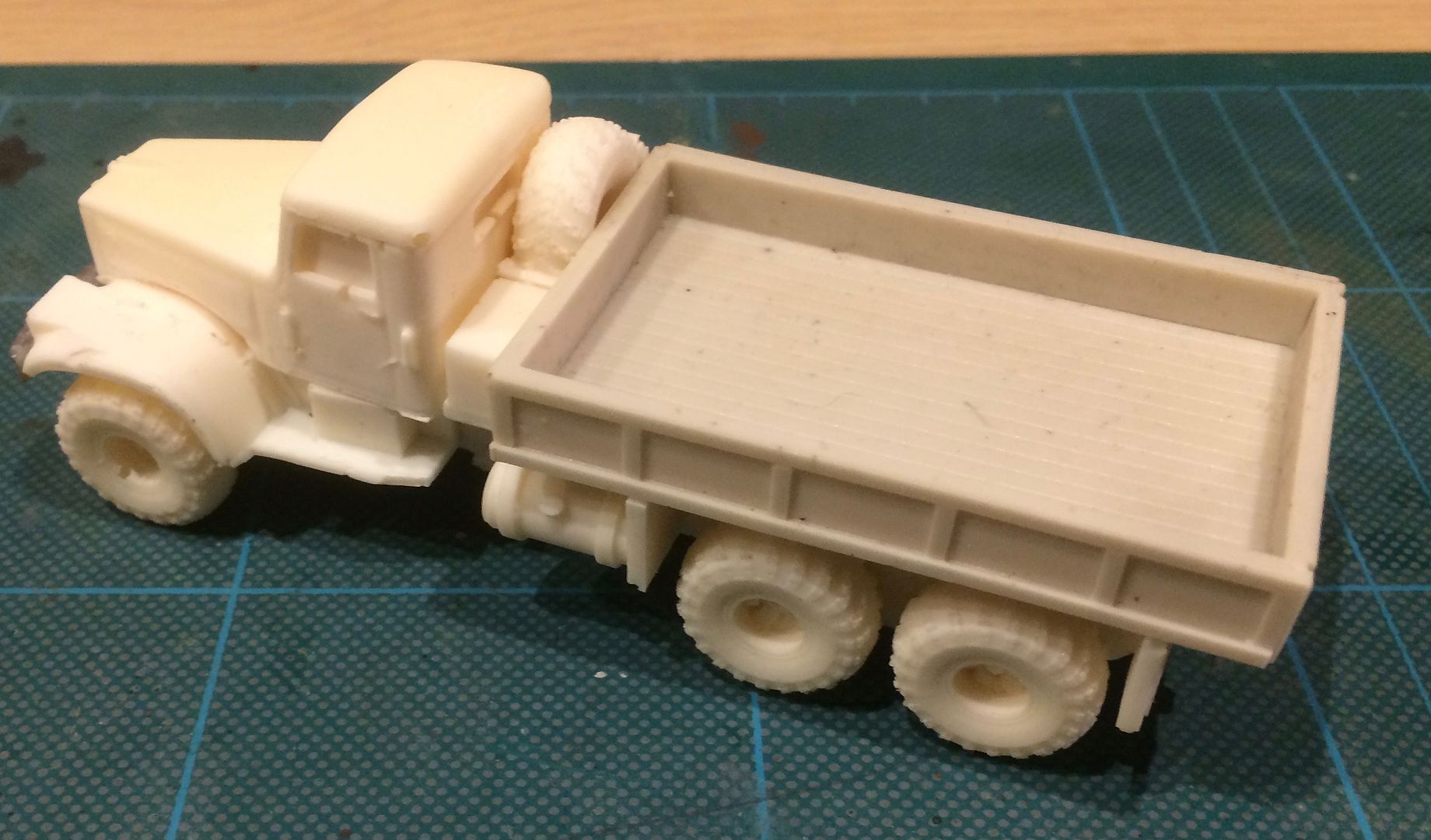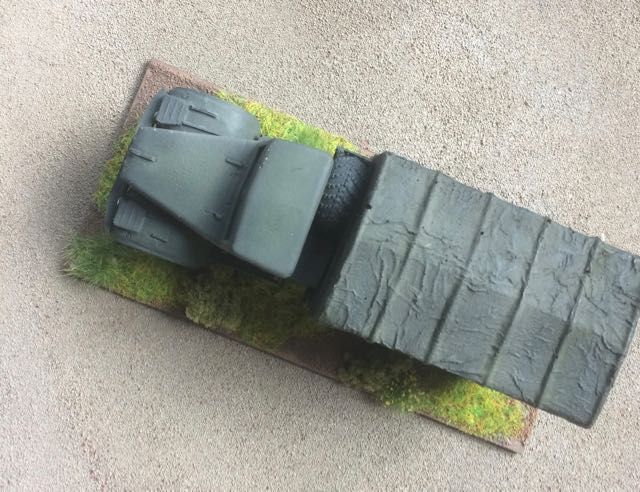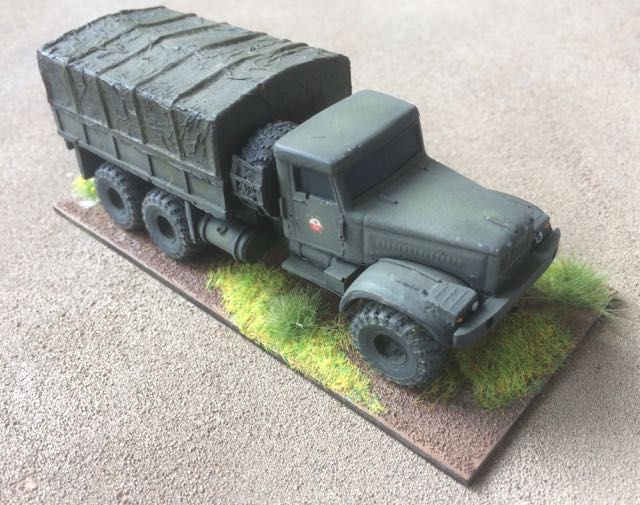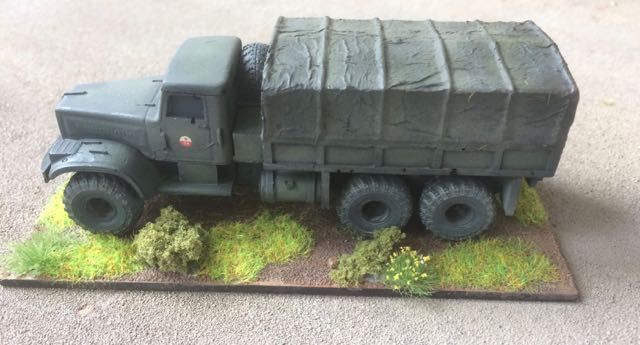First post for over a year I think, nothing earth shattering, a review of S&S's Kraz 255. The 7.5 ton Kraz 214 and 255 trucks provided extreme off-road logistic capacity to the Soviet and Warsaw Pact forces from 1959 through to the end of the Cold War. The Kraz 214 was produced between 1959 - 1963 and the Kraz 255 entered mass production in 1967 and remained in production until 1994. The Trucks are visually similar, so models in 1/72 can be broadly used to represent either.
The vehicle provided the platform for a range of variants which included; the TMM vehicle launched bridge from 1974, The carriage and launch vehicle for the PMP ribbon bridge, and the carriage vehicle for the BMK-T bridging boat, together with a number of engineering earth moving and construction variants. I am using them to provide the transport capability in the Headquaters of my MRR Engineering Company.
The S&S Model is a robust but effective war-games model and is cast in resin and white metal. It can be purchased with or with out the canvas tilt and I have both versions, it cost at the time of posting £11.50 which included P&P. The models I received were cleanly cast with limited holes and flash.
Other manufactures produce versions of this vehicle notably Armory and Armada but both these manufacturers produce for the modelling fraternity with associated complexity and price. The model whilst cleverly constructed would provide challenging to convert as the chasis is effectively a component of the truck body so would need to be replaced in order to produce either a TMM or PMP variant.
After some minimal clean up construction was straight forward and completed quickly with no significant issues, the only thing that slows you down is the amount of time it takes for the super glue to set. Images of the vehicle show little in the way of stowage so I have left the model in its original state.
Other manufactures produce versions of this vehicle notably Armory and Armada but both these manufacturers produce for the modelling fraternity with associated complexity and price. The model whilst cleverly constructed would provide challenging to convert as the chasis is effectively a component of the truck body so would need to be replaced in order to produce either a TMM or PMP variant.
After some minimal clean up construction was straight forward and completed quickly with no significant issues, the only thing that slows you down is the amount of time it takes for the super glue to set. Images of the vehicle show little in the way of stowage so I have left the model in its original state.
I have painted the vehicle in line with my other Soviet equipment in green, although I have been working on evolving my style
- The Vehicle underside is sprayed in NATO Black XF- 69 before being fixed to the base
- The vehicle is given an overall coat of Tamiya XF-13 JA Green, and is then oversprayed with NATO Black XF-69 to create an overall dark green colour.
- The panels were then sprayed with JA Green.
- The Tilt was painted with Olive Drab XF-62, the areas between the tilt supports were oversprayed wit Nato Black and the ridge was over sprayed with Olive Drab. The whole activity was a bit iterative until the required effect was achieved.
- The detail was then picked out with a pin wash using Humbrol Black Wash.
- The wheels were painted with Vallejo Black grey 70852 and then washed with a mix of Vallejo Khaki Grey 70880 and Buff 70976, before being dry brushed with Vallejo Black grey
- Windows were painted with Vallejo Black Grey
- The lights front and back were painted with Vallejo Flat Red 70957, Light Orange 70911 and Sky Grey 70989.
- The doors then received a coat of clear before decals were applied with micro sol then the whole vehicle was sealed with a coat of Tamiya Matt clear.
- A small amount of chipping was carried out on selected areas of the vehicle using Vallejo Black Grey, Mahogany sand 70846 and Sky Grey
- The vehicle was then weathered using an overspray of Tamiya XF-59 Desert Yellow.
The truck has been based on laser cut MDF base supplied by East Riding Miniatures, being a bit of a beast this is 6 cm x 13 cm in order to accommodate the size of the vehicle. These are covered in a mix of sand and white glue before painting. The base is painted with Citadel Gorthor Brown and dry brushed with Vallejo Desert Yellow 70977. Once dry a range of basing materials have been used to create the vegetation on the base.
All up a great little model that provides a useful addition to my Cold War Collection and provides a degree of variety in the truck options otherwise available for a Cold War Soviet Army.
References:
